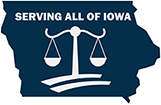- Wellman Motorcycle Accident Injury Attorneys
- Phone: 641-792-3595
- Directions
Motorcycle injury lawyers become resolute champions for riders when disaster strikes. Their expertise in motorcycle accidents allows them to navigate legal intricacies and secure the justice and compensation injured riders deserve.
Road Rash as a Result of Motorcycle Accident
Motorcycles embody freedom, exhilaration, and fun, but they also pose a higher risk for serious injury and death in the event of a collision. One common injury associated with motorcycle accidents is road rash. Road rash occurs when skin is scraped across the road surface, causing lacerations and abrasions.
Degrees of Motorcycle Road Rash
Motorcycle road rash, much like burns, is categorized by severity:
1. First-Degree Road Rash: This minor form of road rash involves skin redness and typically does not require major medical treatment. Home treatments, such as cleaning and applying antibiotic ointment, usually suffice.
2. Second-Degree Road Rash: This level of road rash is more serious as it involves broken skin. Although more painful, it can generally be treated at home with proper care.
3. Third-Degree Road Rash: This severe injury affects all layers of the skin, exposing the tissue beneath and potentially damaging muscles and other structures. Medical intervention, including skin grafting, is often necessary.
Skin Grafting to Treat Motorcycle Road Rash
Skin grafting is a surgical procedure performed under general anesthesia to treat severe road rash. Recovery from skin grafts can be lengthy and challenging, requiring weeks in the hospital for observation of the donor and graft sites and ensuring that the body does not reject the transplanted skin. Post-surgery, movement may be limited for weeks, complicating a return to work or normal activities.
Seeking Compensation for Motorcycle Road Rash
If you were involved in a motorcycle accident caused by another vehicle, you might be entitled to compensation by filing a motorcycle accident claim. Recoverable damages may include:
- Medical Expenses: Costs for immediate and long-term medical treatment.
- Property Damage: Repair or replacement of your motorcycle.
- Lost Wages: Income lost during your recovery period.
- Pain and Suffering: Compensation for physical pain and emotional distress.
To support your claim, it's essential to prove fault and document all losses meticulously. Keep detailed records of medical treatments, bills, and lost work time. Obtain the police report and any witness statements, and provide your attorney with photos and notes about the accident.
Important Safety Tips for Beginner Motorcyclists
With the economy favoring motorcycles as a practical and economical alternative to cars, many people are opting for them. Despite the benefits, riding a motorcycle comes with significant risks, including a lack of protection compared to cars. To reduce your risk, consider the following safety measures:
- Ride with Lights On: Ensure your visibility at all times.
- Wear Protective Gear: Always wear a helmet, clothing that covers your skin, and fully enclosed shoes.
- Follow Traffic Laws: Adhere to all road regulations.
- Stay Aware: Be vigilant of your surroundings and other drivers.
- Avoid Riding Under the Influence: Never ride if you’ve been drinking or are extremely tired.
Additionally, ensure your motorcycle is in good condition before riding by checking lights, tire pressure, and brakes.
A Guide to Properly Fitting Motorcycle Helmets
Choosing the right helmet size is crucial for comfort and safety. Here are key fit checks to ensure your helmet is properly fitted:
1. Forehead Gap: If you can slip your pinky between your forehead and the helmet, it’s too big. The helmet should be snug without extra room.
2. Lifting the Helmet: With the chin strap secure, you should not be able to lift the helmet from your head.
3. Pressure Points: A properly fitting helmet should not cause red marks or indentations.
4. Side to Side Movement: Your skin should move with the helmet when shaking your head side to side. If the helmet moves independently, it’s too big.
5. Face Shield Room: There should be enough room between the face shield and your face so that your nose or chin does not touch it.
Never use a helmet involved in a previous accident, as interior damage may compromise its effectiveness.
Consulting a Motorcycle Accident Attorney
The toll from severe motorcycle injuries can encompass substantial medical expenses and long-term care costs for victims and their families. Lost wages may compound matters, especially if employment becomes unrealistic for an extended period. Getting help from a motorcycle accident attorney allows the pursuit of comprehensive compensation, from financial damages and emotional distress such as pain and suffering.
Victims of these accidents should seek consultation with a motorcycle accident attorney, as damages may be extensive and recovery of compensation is important.
At Walker, Billingsley & Bair, our motorcycle accident attorneys can represent you in dealings with your insurance company, or when filing a personal injury claim. Set up your consultation now by calling 641-792-3595.

